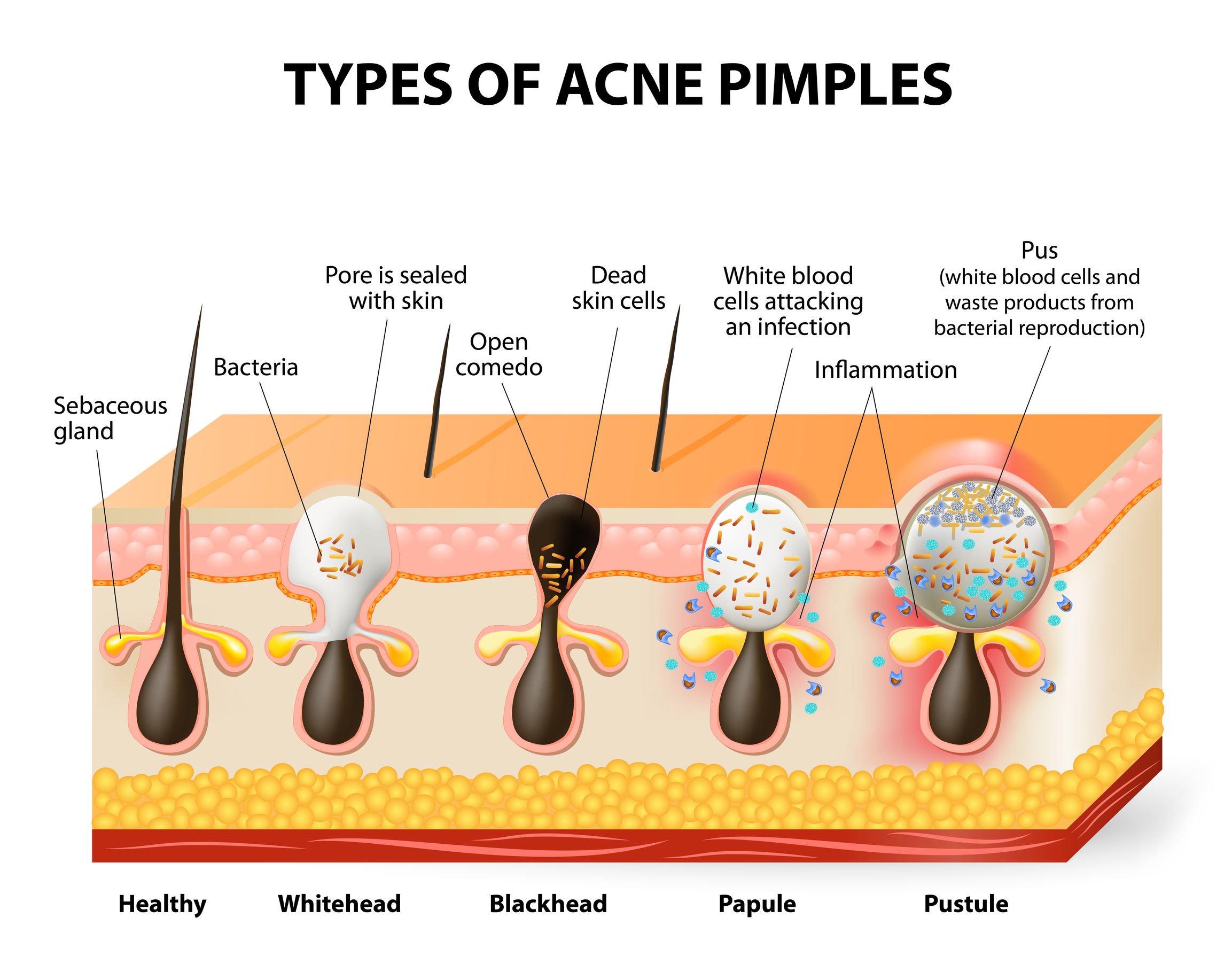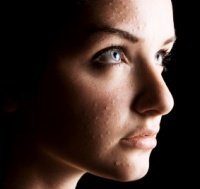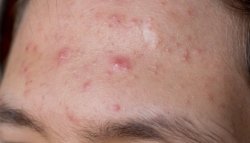Understanding The Different Types of Acne
It's important to know exactly what type or types of acne you have, because each type is treated differently.
This is a common reason why many acne treatments fail -- what works well for one person, may not work at all for you. Your acne treatment must be customized to the type and severity of your acne, as well as the sensitivity of your skin.
Many factors determine the best treatment for your skin -- there is no "one size fits all" solution.
How To Determine Your Type of Acne
Acne can be separated into two basic categories: Non-Inflammatory and/or Inflammatory Acne. Many people have a combination of both types.

Non-Inflammatory Acne:

Typically characterized by: dull sluggish appearance, bumps/blackheads, some pimples/pustules, excessive oil, tissue congestion, and skin is generally not sensitive or reactive.
Comedo is the medical term for an acne impaction made up of dead skin cells and sebum (oil). If you have several of these types of acne lesions, they're called comedones.
In the beginning stages, the impaction is invisible because it's microscopic in size and is located very deep within the pore or follicle. At this point it's called a microcomedo.
As it grows, it becomes visible and looks like a small white seed just under the skin. At this point the lesion is called a closed comedo -- as it becomes enlarged under the surface of the skin, the follicle opening swells closed. If you stretch the skin, you'll feel or see small white bumps. Closed comedones are also known as whiteheads.
As more cells sludge up in the pore, internal pressure may cause the pore opening to dilate as the material inside pushes up to the surface. This type of acne lesion is called an open comedo. When this material is exposed to air, it oxidizes and turns a brownish-black color, which is where the term blackheads comes from.
Some people have confused blackheads with dirt embedded in their pores, but now you know this material is actually thousands of dead skin cells which have become stuck together with the skin's own oil and other natural debris.
Inflammatory Acne:

Typically characterized by: redness/blotchiness, heat in the skin, pimples/pustules/whiteheads/blackheads, possibility of nodules/cysts, excessive oil, and skin is usually sensitive and reactive to products.
In addition to being prone to excessive dead skin cell build up, some people are also genetically prone to inflammation. When acne bacteria combine with oil and dead skin cells, they irritate the lining of the follicle walls.
When irritation and pressure inside the pore builds, the lining will rupture and spill debris into the surrounding skin tissue. As your body's self healing mechanism kicks in, white blood cells will form in an attempt to dissolve the debris. This process results in small, red, swollen bumps called papules.
Within the first three days of the pore rupturing, white blood cells clump together forming pus which will migrate to the surface bringing the impacted material with it. This type of acne lesion is called a pustule.
If the follicular break is very large or deep in the skin, inflammation may last several days or even weeks. These larger inflamed lesions, types of acne called nodules, can be the size of a pencil eraser or larger and are usually quite sore to the touch.
Cysts happen when one or more follicles collapse or explode deep within the skin and cause severe swelling, inflammation, and pain. Nodular cystic types of acne can take weeks to heal completely.
The longer it takes for an acne lesion to heal, the more likely you are to experience scarring. To minimize scarring, inflammation must be brought under control as quickly as possible by using strong anti-bacterial and healing agents.
Acne Vulgaris
Acne Vulgaris is the technical term for what most people refer to as "problem skin, pimples, blemishes, break outs or zits".
It can be classified as mild, moderate, or severe depending on the type and number of lesions, and whether inflammation is present. These types of acne lesions typically form on the face, neck, chest, and back because we have more oil glands located in those areas.
Acne Vulgaris is characterized by any combination of blackheads, whiteheads, papules, pustules, nodules, or cysts.
Dermatologists often classify acne vulgaris into four major grades:
- Grade I Acne - Mostly open and closed comedones (blackheads & whiteheads) with an occasional pimple. This is typical of a teenager just beginning puberty.
- Grade II Acne - Very large number of closed comedones, with occasional pustules and papules. The closed comedones, or whiteheads, never fully mature into open comedones and the skin may appear to be studded with lots of little white bumps. This process, called maturation arrest, happens when whiteheads just continue to enlarge and the surface opening never dilates, trapping the material inside.
- Grade III Acne - Probably the most common type of acne -- consists of inflamed papules and pustules along with open and closed comedones. Most people think of this type of acne as "typical teen acne"
- Grade IV Acne - Commonly referred to as cystic acne -- consists of open and closed comedones, large papules and pustules, as well as nodules and/or cysts. This type of acne is characterized by severe inflammation which becomes very red or even purple in color and leads to scarring or hyperpigmentation. The good news is that this type of acne typically responds quickly to treatment.
Cosmetic Acne (Acne Cosmetica)
Cosmetic Acne is directly caused by make up, skin care, and hair styling products that contain pore clogging or comedogenic ingredients. This type of acne usually looks like lots of tiny bumps (whiteheads) with occasional papules or pustules.
Using products that contain comedogenic ingredients can even cause acne in people who haven't inherited acne prone skin.
You might think that you can avoid clogged pores and break outs by choosing "non-comedogenic" or oil-free skin care products -- but those terms are very misleading.
You'll probably be surprised to learn that many of the top selling acne treatment products contain pore clogging ingredients to make them more comfortable on your skin -- and that's why you continue to break out.
Reading ingredient labels yourself or getting recommendations from an acne expert are the best ways to avoid cosmetic acne.
Disclosure: Some of the links below are affiliate links, meaning at no additional cost to you, I will earn a commission if you click through and make a purchase. I have extensive experience with my affiliate brands and have carefully chosen each one for their excellent quality, value, and ability to solve problems for people with acne prone skin.
Shop AcneSkinExpert's #1 recommended acne safe makeup here
Get more information about comedogenic oils and pore clogging ingredients.
What Is Acne Rosacea?
Rosacea, also referred to as Acne Rosacea, can look and feel similar to Acne Vulgaris, however, it's a completely different skin condition characterized by flushing, redness, and a rash-like appearance.
Rosacea is a chronic, progressive condition without a cure, and left untreated it can worsen over time.
Getting a skin assessment from an acne expert can help you determine whether you have Rosacea or Acne.